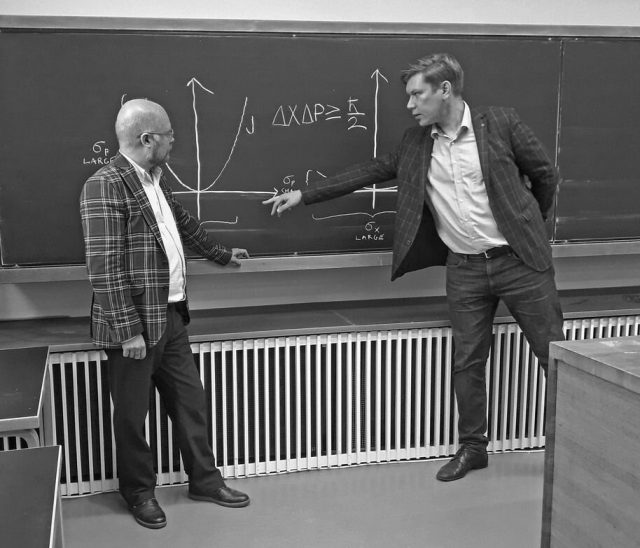Quantum mechanics arose in the 1920s, and since then scientists have disagreed on how best to interpret it. Many interpretations, including the Copenhagen interpretation presented by Niels Bohr and Werner Heisenberg, and in particular, von Neumann-Wigner interpretation, state that the consciousness of the person conducting the test affects its result. On the other hand, Karl Popper and Albert Einstein thought that an objective reality exists. Erwin Schrödinger put forward the famous thought experiment involving the fate of an unfortunate cat that aimed to describe the imperfections of quantum mechanics.
In their most recent article, Finnish civil servants Jussi Lindgren and Jukka Liukkonen, who study quantum mechanics in their free time, take a look at the uncertainty principle that was developed by Heisenberg in 1927. According to the traditional interpretation of the principle, location and momentum cannot be determined simultaneously to an arbitrary degree of precision, as the person conducting the measurement always affects the values.
However, in their study Lindgren and Liukkonen concluded that the correlation between a location and momentum, i.e., their relationship, is fixed. In other words, reality is an object that does not depend on the person measuring it. Lindgren and Liukkonen utilized stochastic dynamic optimization in their study. In their theory’s frame of reference, Heisenberg’s uncertainty principle is a manifestation of thermodynamic equilibrium, in which correlations of random variables do not vanish.
“The results suggest that there is no logical reason for the results to be dependent on the person conducting the measurement. According to our study, there is nothing that suggests that the consciousness of the person would disturb the results or create a certain result or reality,” says Jussi Lindgren.
This interpretation supports such interpretations of quantum mechanics that support classical scientific principles.
Find your dream job in the space industry. Check our Space Job Board »
“The interpretation is objective and realistic, and at the same time as simple as possible. We like clarity and prefer to remove all mysticism,” says Liukkonen.
The researchers published their last article in December 2019, which also utilized mathematical analysis as a tool to explain quantum mechanics. The method they used was stochastic optimal control theory, which has been used to solve such challenges as how to send a rocket from the Earth to the Moon.
Following Occam’s razor, the law of parsimony named after William of Ockham, the researchers have now chosen the simplest explanation from those that fit.
“We study quantum mechanics as a statistical theory. The mathematical tool is clear, but some might think it is a boring one. But is an explanation really an explanation, if it’s a vague one?” asks Lindgren.
Physics is a great hobby for a civil servant
In addition to the study of quantum mechanics, Lindgren and Liukkonen have many other things in common: they were both members of the same maths club at Kuopio Lyceum High School, they both have done post-graduate research, and both have careers ascivil servants. Liukkonen has already finished his Ph.D. dissertation on endoscopic ultrasound on joints and now works as an inspector at Radiation and Nuclear Safety Authority.
Provided by: Aalto University
More information: Jussi Lindgren et al. The Heisenberg Uncertainty Principle as an Endogenous Equilibrium Property of Stochastic Optimal Control Systems in Quantum Mechanics. Symmetry (2020). DOI: 10.3390/sym12091533
Image: Jukka Liukkonen (left) and Jussi Lindgren (right) describe Heisenberg’s uncertainty principle.
Credit: Aalto University.











